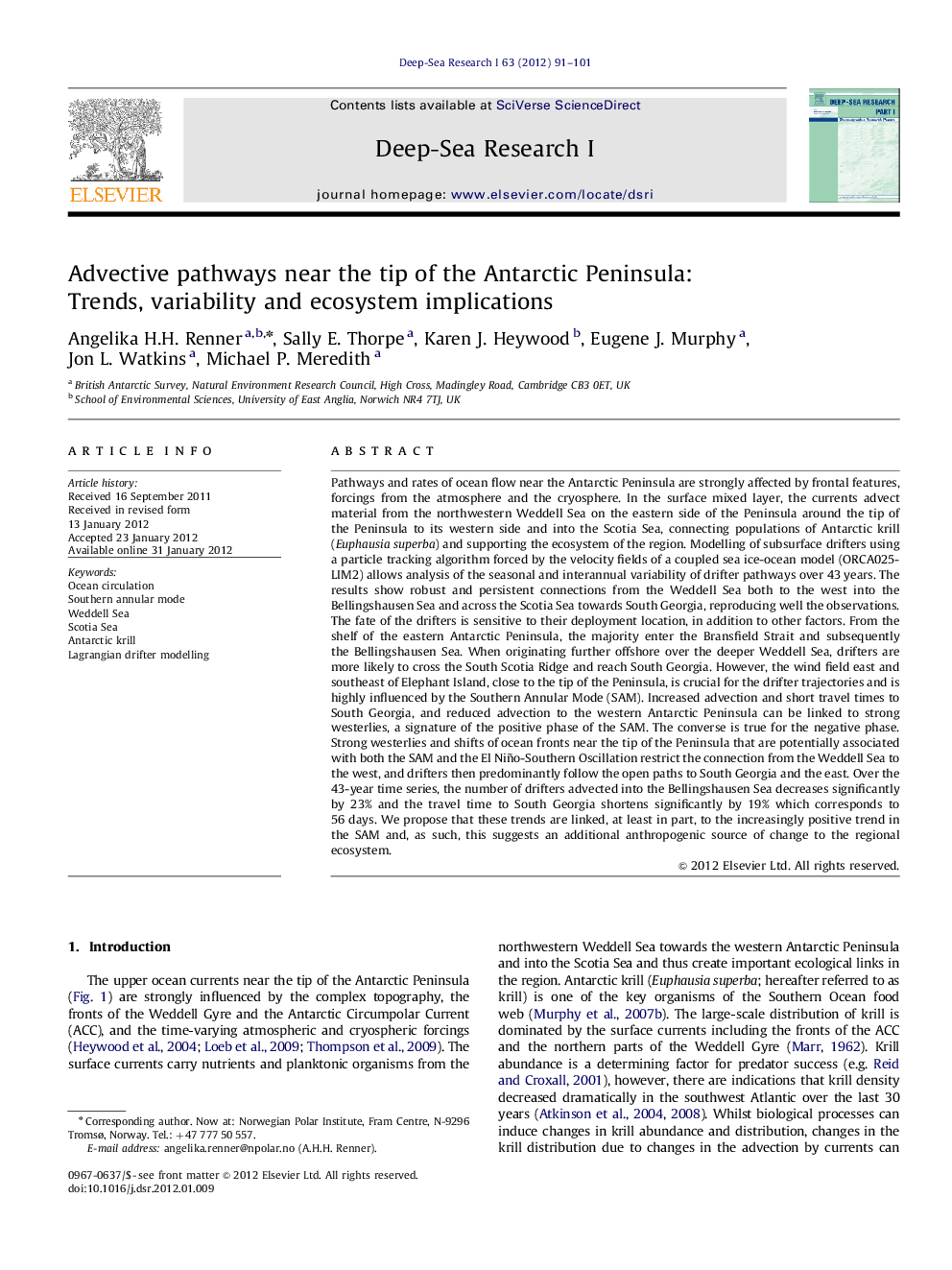| Article ID | Journal | Published Year | Pages | File Type |
|---|---|---|---|---|
| 4534770 | Deep Sea Research Part I: Oceanographic Research Papers | 2012 | 11 Pages |
Pathways and rates of ocean flow near the Antarctic Peninsula are strongly affected by frontal features, forcings from the atmosphere and the cryosphere. In the surface mixed layer, the currents advect material from the northwestern Weddell Sea on the eastern side of the Peninsula around the tip of the Peninsula to its western side and into the Scotia Sea, connecting populations of Antarctic krill (Euphausia superba) and supporting the ecosystem of the region. Modelling of subsurface drifters using a particle tracking algorithm forced by the velocity fields of a coupled sea ice-ocean model (ORCA025-LIM2) allows analysis of the seasonal and interannual variability of drifter pathways over 43 years. The results show robust and persistent connections from the Weddell Sea both to the west into the Bellingshausen Sea and across the Scotia Sea towards South Georgia, reproducing well the observations. The fate of the drifters is sensitive to their deployment location, in addition to other factors. From the shelf of the eastern Antarctic Peninsula, the majority enter the Bransfield Strait and subsequently the Bellingshausen Sea. When originating further offshore over the deeper Weddell Sea, drifters are more likely to cross the South Scotia Ridge and reach South Georgia. However, the wind field east and southeast of Elephant Island, close to the tip of the Peninsula, is crucial for the drifter trajectories and is highly influenced by the Southern Annular Mode (SAM). Increased advection and short travel times to South Georgia, and reduced advection to the western Antarctic Peninsula can be linked to strong westerlies, a signature of the positive phase of the SAM. The converse is true for the negative phase. Strong westerlies and shifts of ocean fronts near the tip of the Peninsula that are potentially associated with both the SAM and the El Niño-Southern Oscillation restrict the connection from the Weddell Sea to the west, and drifters then predominantly follow the open paths to South Georgia and the east. Over the 43-year time series, the number of drifters advected into the Bellingshausen Sea decreases significantly by 23% and the travel time to South Georgia shortens significantly by 19% which corresponds to 56 days. We propose that these trends are linked, at least in part, to the increasingly positive trend in the SAM and, as such, this suggests an additional anthropogenic source of change to the regional ecosystem.
► Transport out of the NW Weddell Sea is influenced by the Southern Annular Mode. ► Travel time from the Antarctic Peninsula to South Georgia decreased during 1960–2004. ► Transport changes affect the Scotia Sea and Antarctic Peninsula ecosystems.
